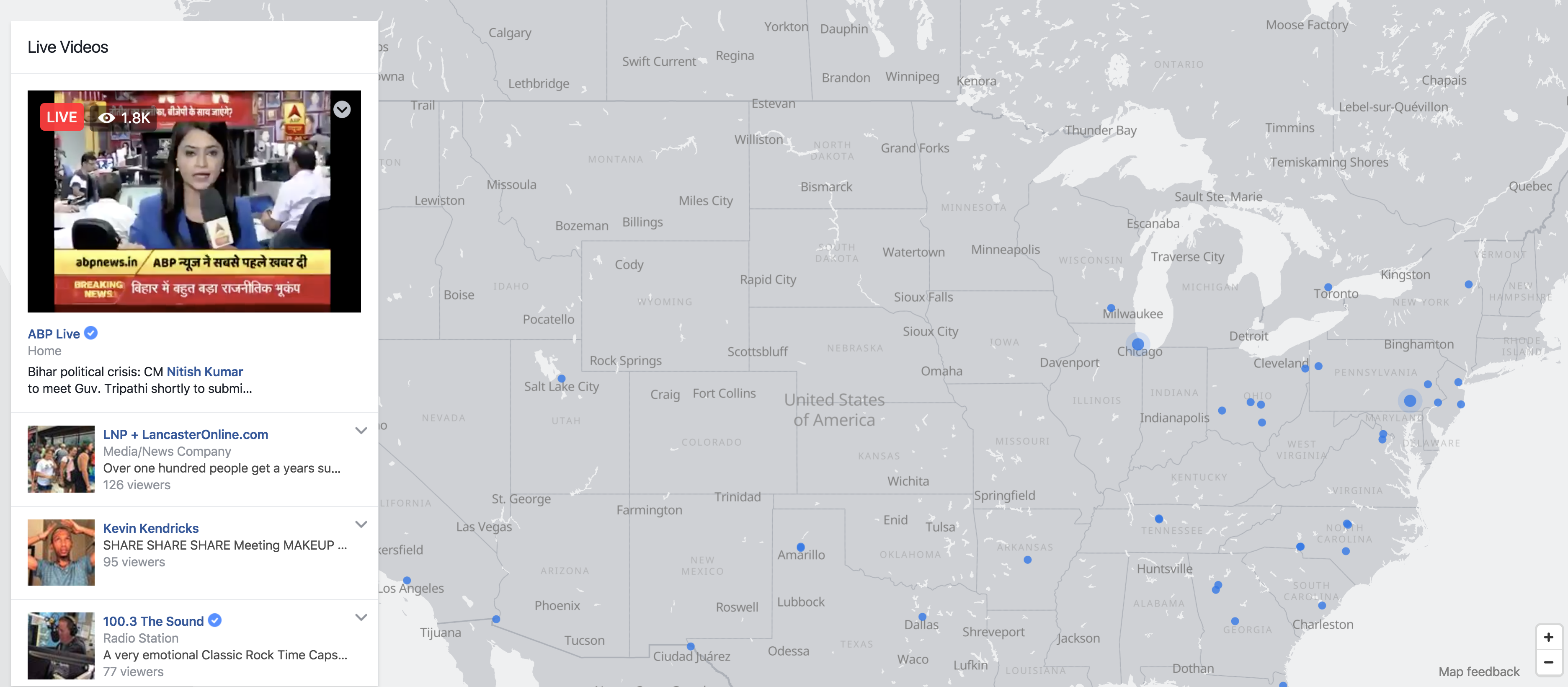Newsrooms have been experimenting with Facebook Live in the past year to connect with their audiences and give behind-the scene looks, extras, and teases to their newscasts.
When Mark Zuckerberg unveiled Facebook Live in April 2016, he used the tool himself to interact and answer questions about the new feature. Since then, news, weather, and sports reporters have experimented with the platform to determine the best times, methods, and approaches to draw and engage with an audience. Depending on how creative reporters are with Facebook Live and photo posts, the shares and likes could put them in favor with their news director in a way that creative videography and storytelling hasn’t been able to do in a decade.
In an survey conducted in April 2017, reporters, MMJs, producers, anchors, interactive content managers, and news directors were invited to answer a survey about their stations’ use of Facebook Live. Within a 48-hour period, 54 responded and also offered some great insight on the demands created by Facebook Live. The results showed the opportunities Facebook Live provides changes the dynamics of coverage.
- Love it or Hate It? 55 percent said they liked it. 9 percent don’t like it. 35 percent were indifferent.
- Experience. 25 percent said they done at least one Facebook Live video, 9 percent said they have done between 10-20, and 22 percent said they have done 20+.
- News Gathering. 68 percent said it changed how they cover daily news stories, and 90 percent said it changed how their station covers breaking news.
- Reach. 46 percent believe Facebook Live reaches more viewers through shares and comments than traditional newscasts.
Other responses indicated that respondents like the fact that Facebook Live gives them an instant audience and they can basically increase their own fan following. They agree that the quality is not always professional, but it’s getting better with more experience and better tools that help them with visuals and audio. Dealing with when to go live and what to carry is still an ethical dilemma journalists face daily. Whether to carry witness reports versus waiting on official reports continues to be a discussion between the assignment desk and those in the field whether it’s live on social media on broadcast.
Adopting Facebook Live in the Classroom
As these adaptations impact the industry, educators need to analyze how they are preparing future broadcasters to be competitive. As a professor who follows alumni on social media and recruits them to talk to classes about their experience, I’ve noticed several struggling with several issues I plan to address this upcoming academic year.
1. Longer Live Shots Journalists can stay on Facebook Live for much longer than the traditional broadcast live shot. Some alumni of our program have been live for more than 10 minutes at a time. Throughout a semester, students should have opportunities to do Facebook live shots varying lengths that incorporate different activities, like live interviews or interacting with viewers.
2. Breaking News It can be hard to simulate breaking news when students aren’t in the middle of the situation. You can take real situations from your market and develop exercises that allow them to practice what they know and can say as details are released at different times within an hour time frame.
3. Technology Limits Bring in MMJs to stress how they battle the videography, audio, and performance challenges of using a smartphone vs. having a videographer’s help.
4. Ethical Training Solicit and develop case studies where reporters regret going live too soon. Any repercussion discussions from local law enforcement and the public involving on-spot decisions should help beginning reporters and producers think issues through before the time comes.
5. Multitasking Handling many things at once does not come natural to young people just because they have grown up with social media. Teaching students how to prioritize and organize their information and time management must be stressed as part of the lifestyle training for a multimedia journalist.
6. Writing Spelling, punctuation, and grammar goes through an editor before recording voiceover and usually going live in a newsroom. On Facebook Live, there’s no filter. Students must prepare and double-check for accuracy before they ever hit the live button.
7. Live Platform of Choice Most college students are not on Facebook and they don’t understand the Facebook audience. They spend their time on Snapchat, Instagram, and Twitter. Educators should live on all platforms with them and help them distinguish why 2 billion people use Facebook and show them global engagement happened minute by minute on the Facebook Live Map.
Chandra Clark, Ph.D., is an assistant professor at the University of Alabama who teaches introductory and advanced broadcast news and production, producing, social media, and new media marketing classes. She was previously a local news producer in Alabama.


